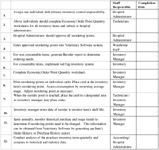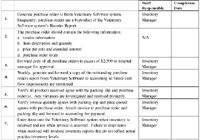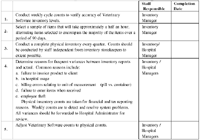We have lots of inventory: So what's wrong with that? (Proceedings)
Inventory is one of the most profitable and vulnerable segments of income generated within a veterinary hospital.
Inventory is one of the most profitable and vulnerable segments of income generated within a veterinary hospital. It is an asset class that needs to have strong internal controls so everything from ordering, stocking and storage and pricing is accurate and efficient.
For inventory to be utilized in a practice effectively, it should be priced with a normal mark-up. For those items that are considered to be non shopped and exposed the normal mark up is 150% or 2.5 time the cost. Added to this is what is commonly referred to as a dispensing fee. Also a minimum per pill and prescription fee are utilized so low quantities of medication dispensed are treated with a normal profit margin. For those items that are shopped and exposed, the normal mark up is 100% or 2 times cost. Typically, these items are considered the most vulnerable to internet and catalogue shopping. These products are competively priced so no dispensing fees or minimum prescription fees are usually involved. Food products are usually marked up based upon the manufactures suggested retail price and these products usually carry a gross margin of 38% to 45%. The typical veterinary hospital can make a good profit from the sale of food. The issue with food is that many times nutrition is not taken seriously as part of a medical plan for a pet and never discussed. Consequently food sales in many hospitals are below what they could potentially be if a discussion of a pet's dietary needs were considered part of a pet's normal medical plan in every circumstance. I also think it important that every hospital should take a staff person and develop them as a nutritional consultant who can discuss dietary needs with every client.
All veterinary hospitals should look at the inventory segment of their practice as one of the most profitable on a per square foot basis. The pharmacy area and food storage area in most hospitals is typically not more than 120 square feet yet drives up to 30% of the practice income.
When working with drug companies and bulk purchases with dated billing the question always is, are these deals worth the effort? They are but do not over buy. The rule of thumb is do not buy more than you will use by the time you have to pay the bill. There is nothing wrong with using others money to fund cash flow or savings for your hospital.
Product activity is a variable cost activity. What do we mean by this? It means that product sales will move in direct relationship to cost and the gross profit earned from selling products will always remain the same.
Products sales are the most vulnerable segment of your business model and most likely the threat will continue or get worse. Internet pharmacies and catalogue house will continue to prey on your most widely dispensed medications. The bottom line to this threat is that you should fight to keep these sales as long as possible. Veterinary medicine is a fixed cost business and to the extent the gross margin is lost from these sales, it makes it that much more difficult to cover fixed costs.It will likely mean that other service fees will have to rise to maintain the same profitability within your hospital. Consequently, you should fill the clients need for immediate gratification when looking for these products.
If you look to continue to improve the profitability of your hospital you must look for new ways to increase revenue while controlling expenses. You cannot improve profitability most times by cutting expenses since many of the hospital's costs are fixed. Enhance product sales by educating clients, servicing them adequately and providing them convenience for getting their products. You can offer convenience by setting up reminders for these items or by anticipating their purchases and consider delivery services or mailing the items to them.
All hospitals should have developed a policy with how they will deal with internet pharmacies and catalogue houses. Will you accept faxed prescriptions or require the client to come in and pick up a hospital prescription? Your policy should be written and reviewed with all staff members.
The proper management of inventory requires you to calculate the hospital's yearly inventory turns. This is done by dividing the hospital's average inventory by its yearly drug purchases. This must be an annualized computation and requires the hospital take at least a yearly physical inventory of all drugs and supplies; both those held for resale and consumed. The industry average for inventory turns is 4 to 5 times turns and if you divide the turns by the number of days in the year, it provides you the number of days it takes to completely turn over the inventory. Theindustry average is one every 90 days.
Good inventory control procedures are imperative to maintaining adequate controls over inventory. The following documented procedures are important to maintain that control.
Inventory and Purchasing Objectives
The ultimate goal for an inventory/purchasing system for veterinary practices is to ensure that adequate inventory supplies are available for patient treatment while being controlled at efficient levels; thereby, maximizing practice resources. Also proper product mark up should be adequate to ensure profits. Inventory efficiency is determined by how long items stay on the hospital shelves. Inventory efficiency is stated by the number of times inventory turns over within a twelve month period. It can also be stated in an average number of days instead of times. Industry average is 4 to 5 times per year or every 89 days. Achievement of inventory goals requires ongoing cooperation between the purchasing and professional staff and establishment of effective, clearly communicated inventory management and purchasing procedures.
- Inventory levels are sufficient to provide quality patient care, while improving the practices inventory turns and cash flow.
- Inventory purchases are authorized, properly valued and recorded timely.
- Inventory items are secured and physical loss of inventory is prevented or identified and accounted for on a timely basis.
- Inventory records produced are reliable and provide accurate gross profit information for financial reporting.
Objective:
Inventory levels are sufficient to provide quality patient care, while improving the practices inventory turns and cash flow.
Implementation Procedures:

Objective:
Acquisitions of inventory are authorized and properly recorded; movement and usage of inventory are controlled and recorded accurately as to department and quantity.
Implementation Procedures:
Ordering From Vendor

Objective:
Inventory items are secured and physical loss is prevented or identified and accounted for on a timely basis.
Implementation Procedures:

Objective:
Inventory records produced are reliable and provide accurate gross profit information for financial reporting.
Implementation Procedures:

Other Related Procedures (Expiration Dates, Volume discounts, Office supplies):
